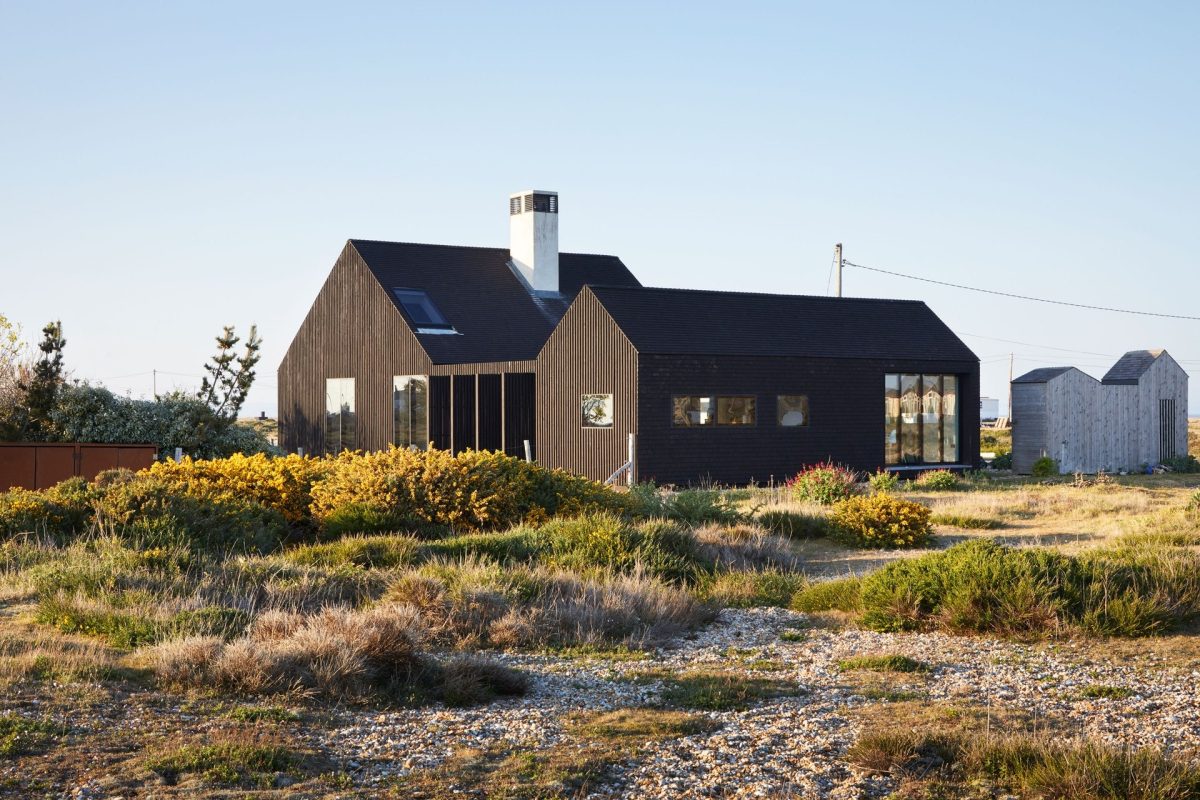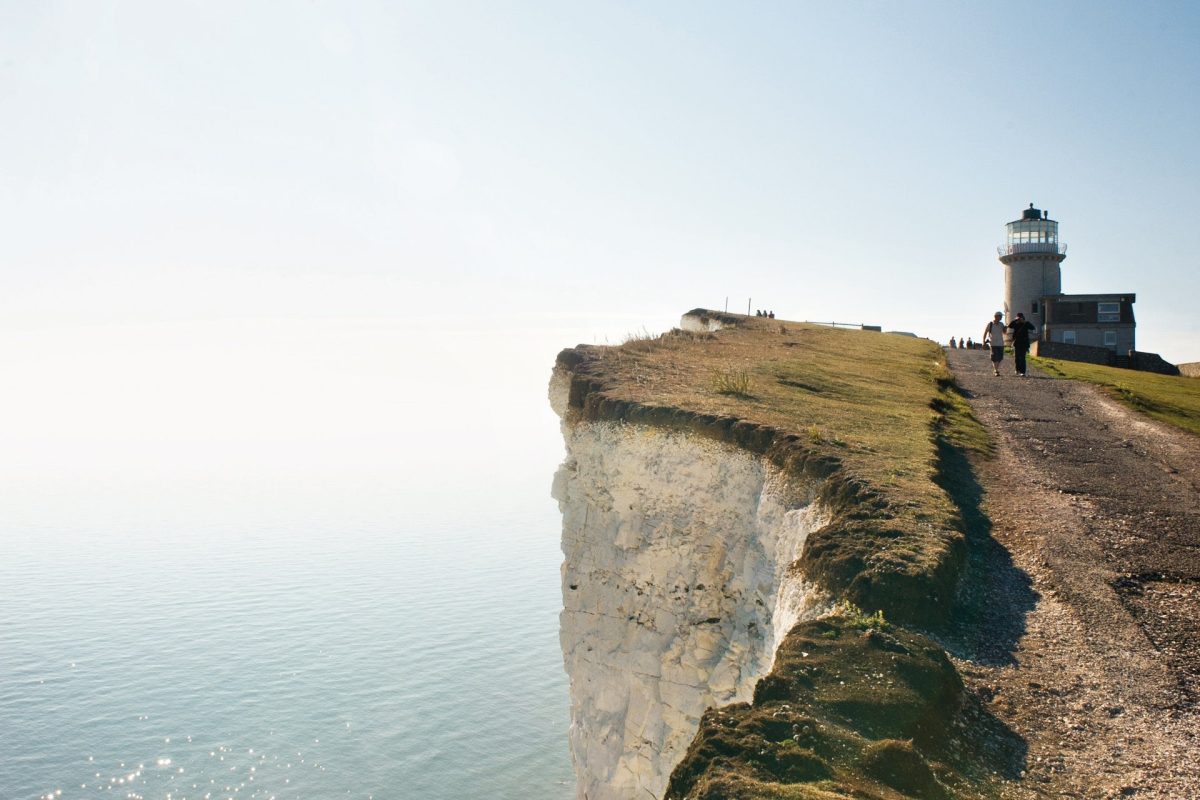Blog
The best seaside towns in England
Seaside towns in England may not be best known for their weather and white sand, but there’s no denying they have charm. On the south-westerly corner of Britain, beaches with clear Atlantic waters and powdery sands await. Parents tuck into seafood platters in beach shacks and hotel restaurants and look out to sweeping coastal views as children ride waves at surf schools. Elsewhere, Eastbourne offers a quintessentially British experience. Fish and chips in hand, the town and its surrounds are best explored on foot – just wipe your hands clear of batter residue before fingering through bargain finds in the stores that hide among the alleyways. Further up, Norfolk has been a spot for holidaymakers for many years. The hills inland are littered with reminders of the past and its people, while new openings on the coast are making it an attractive destination for those in search of a stylish UK staycation. From north to south, east to west, these are some of our favourite seaside towns in England – along with what to see, where to stay, and what to eat and drink during your time there.

Where to stay
A low-slung scattering of rustic fisher-man’s huts and right-angled architectural passion projects across the shingle offer an insight into this coastal community. Popular rental options include Shingle House and Wi Wurri. Down the road, behind the dunes at Camber Sands, The Gallivant has seasidesmart rooms with roll-top baths, a Bamford spa cabin and an excellent locavore restaurant; The Gallivant Littlestone Beach opens nearby this summer, with 12 bedrooms and a design that references the breezy beachiness of East Coast America in the late 1920s.
Where to eat and drink
With two boats working daily, seafood doesn’t get much fresher than at Dungeness Snack Shack, a matt black cabin that, depending on the season, serves scallop baps, lobster, crab, sole and plaice with fried potatoes and homemade tartare and chilli jam. Some of Britain’s best wineries – Gusbourne, Charles Palmer and Tillingham – are no more than a 30-minute drive away. Ben Olsen
Falmouth, Cornwall
Neither in thrall to celebrity chefs, nor reliant on pastel pink-clad summer crowds, this charismatic harbour town has sparkling beaches right in the thick of it and a subtropical climate – not to mention a year-round buzz. Paddleboarders setting off at dawn from Gyllyngvase Beach overlap with workers knocking off from shifts at the dock, while itinerant hipsters seek out single-origin roasts at Beacon Coffee or craft beers from Verdant Brewing Co. The abundance of art students in Penryn means that this is a town where people make art: see it at new grass-roots music venue The Cornish Bank. Falmouth has a railway station, so there is no need to drive, with a short ferry to St Mawes, and wild-flower-lined paths to Pendennis Castle and the Helford River.
Where to stay
There is a cluster of smart hotels between Gyllyngvase Beach and the centre of town. The reimagined 84-room St Michaels Resort now has an expansive spa and hydrotherapy centre. Nearby, the cosier Merchants Manor has added hot tubs to its subtropical gardens. In town, gastropub Star and Garter has three smart suites overlooking the harbour.
Where to eat and drink
Falmouth swerves the foodie hype associated with Padstow, Porthleven or Newlyn, but its stock is rising. Spilling out onto the cobbles at Old Brewery Yard, Mine serves a clever, concise menu informed by local produce: Cornish sole, crab fritters and baked celeriac. Having added three AA Rosettes to Merchants Manor’s Rastella, South African chef Hylton Espey branched out last summer to launch Culture at Custom House Quay. In a Nordic-inspired setting, seven-course tasting menus make a meal of foraged, preserved and fermented ingredients alongside braai-grilled local lamb and venison. Ben Olsen
Suffolk Heritage Coast
The Suffolk seaside in the summer isn’t just about Aldeburgh or Southwold. And despite its soulful villages, heathland-edged coast and bounteous foodie scene, there are still parts that remain happily under the radar. Deserted rivers, forests and even beaches, abound, including Covehithe, with its powder sand shoreline stretching as far as the eye can see, and the rugged shingle stretches of Dunwich and Thorpeness.
Where to stay
The latest luxe bolthole at Wilderness Reserve is the cute-as-a-button Stump Cottage, with its private spa, sauna and lake. In Aldeburgh, the newly opened The Suffolk has six soothing rooms, some with sea views, along with a buzzy bar and restaurant (see The Weekender, p58). Room five at the dog-friendly Five Acre Barn, a cedar clad, Riba award-winning B&B just outside of town, has triple-aspect views onto stunning gardens.
Where to eat and drink
Pump Street Bakery in Orford serves the county’s best breakfast pastries and great sourdough, and sea-salt bars at its sister chocolate shop across the square. Butley Orford Oysterage is a no-fuss lunch spot to knock back a dozen outstanding Butley Creek bivalves after a soothing walk around the quay and along the River Ore. Just outside Saxmundham at Maple Farm, Alice Norman’s café, Pinch, serves her cooling St Jude and blackcurrant ripple ice cream, with homemade cones using the farm’s grains. A frontrow table at The Ramsholt Arms overlooks the best sunsets above the River Deben. At the Greyhound Inn in Pettistree, River Café alumnus Harry McKenzie is wowing locals with cow’s curd ravioli and lamb sweetbreads, broad beans, crème fraîche and sorrel. Clare Coulson
Scarborough, Yorkshire
Scarborough has a good claim to being the most beautiful seaside resort in England – although I may be biased, given that I grew up in North Yorkshire and often visited as a child. The dramatic castle occupies the headland that separates the two main bays, steep cliffs stretching away in both directions. The old town ascends the slope to the castle in a maze of crooked streets, with buildings dating back to Tudor times. Scarborough is a showcase of every stage of seaside architecture over the past two centuries, from Georgian crescents to Victorian hotels, with an Art Nouveau spa and an Art Deco theatre. The town was built to entertain the wealth of West Yorkshire textile owners with museums, galleries and theatres; their ambition and flamboyance is evident everywhere. Meanwhile, still hovering over the place is the glamour and eccentricity of the Sitwell family and its sibling writers, Edith, Osbert and Sacheverell, who spent summers here in its glorious Edwardian heyday.
Where to stay
Foremost among the new breed of Scarborough hotels is Bike & Boot, in a handsome Victorian terrace just outside the town centre, with dog-grooming and an on-site film club.
Where to eat and drink
Scarborough still isn’t a culinary hot spot to rival Margate or Whitstable, but Café Fish is a must-visit for local crab and lobster, and serious Yorkshire steak among all the seafood. Local institution Love Brew Café is treasured for its great coffee and hearty vegan food, while Steampuss Cat Lounge has become a cult attraction, with 15 in-house felines. Madeleine Bunting
Salcombe, Devon
The narrow A-road winding towards the southern edge of Devon promises access to an enchanted world. Wild fuchsias grow in the hedgerows; seagulls strike picturesque poses; dolphins frequent the sheltered bays. Salcombe is a pretty cluster of stone and pastel-coloured houses built along terraces on a steep slope. They overlook wonderfully blue waters that are studded with white boats. Most of the sheltered, golden beaches of the estuary can be reached by car, but it is quicker and more fun to take a ferry from the centre of Salcombe. The South Sands Ferry serves the western shore; beaches on the eastern shore are reached from the village of East Portlemouth, a ferry ride across the estuary from Salcombe. Head to Whitestrand Quay and catch the foot ferry to South Sands, a journey of 10 minutes on a tubby, blue-and-yellow vessel that looks as though it could have sailed out of a children’s picture book. Take a cruise around the estuary with Whitestrand Boat Hire at Strand Court, where you can also rent rods and self-drive boats.
Where to stay
A minor revolution has been taking place in Salcombe’s hotels. South Sands is a boutique property with a New England look. Set on a glorious sweep of sandy beach about a mile from Salcombe, it has 22 spacious bedrooms reached via a spiral staircase and 5 beach suites. In town, the Salcombe Harbour Hotel on Cliff Road has a spa, pool and extensive terrace.
Where to eat and drink
In town, Dickandwills on Fore Street is a sleek brasserie with a stunning waterside terrace. It serves dishes including carpaccio of Devon beef and slow-cooked, spiced local lamb. has a loyal following thanks to its reasonable prices, cheerful ambience and excellent seafood. Slightly further afield is Sea View Restaurant at South Sands hotel, which has fabulous views from its terrace and through a curving wall of windows. The menu has seasonal dishes such as chilli crab linguine and Salcombe Gin salmon gravlax. For relaxed family dining, go to The Winking Prawn on North Sands, less than a mile from the heart of Salcombe: an extended beach café, it serves crab-mayonnaise lunches and a bistro-style dinner menu which includes monkfish wrapped in bacon.
Eastbourne and beyond
Its pier presents a chimerical silhouette above the water; its seafront promenade is punctuated by a much-loved bandstand; its streets are lined with grand, Victorian buildings. Eastbourne in East Sussex is the quintessential, old-fashioned seaside resort. But it provides easy access to the glorious new South Downs National Park, and to intriguing and little-known art trails. Eastbourne is fronted by three miles of shingle, plus sand at low tide. There are deckchairs and cafés on the Grand Parade section. Beyond the town are stunning and relatively secluded beaches beneath the cliffs of the South Downs. Falling Sands Beach, accessed from a footpath and via steep steps, is an attractive (and sandy) stretch. Stroll the seafront promenade, which is lined with beds of bright flowers. For great views back over the town’s Italianate architecture, walk the 1,000ft-long pier. Visit Towner Gallery for its contemporary art exhibitions . Eastbourne’s hinterland has informal art routes that are also well worth following. About 10 miles away is Charleston, which was the home of Vanessa Bell and Duncan Grant and retains their murals and art collection (including works by Picasso and Renoir).
Where to stay
The recently opened Port Hotel is the smartest stay in Eastbourne – a gamechanger, set right on the seafront. Well-positioned on the seafront, on King Edward’s Parade, the boldly decorated Citrus Eastbourne is furnished with faux-fur curtains and Seventies-style designer wallpaper. The 50 bedrooms are spacious and keenly priced, and most offer good views.On the steep, white cliffs of nearby Beachy Head is the Belle Tout Lighthouse, now a quirky and stylish B&B. Built in 1832 and a working lighthouse until 1902, it was picked up and moved away from the eroding cliff edge in 1999. The refurbished property has six bedrooms and offers gourmet breakfasts and complimentary evening drinks in the lounge.
Where to eat and drink
Go to breezy Company for brunch or Skylark for cande-lit suppers. For something a little edgier, Cru is a subterranean restaurant and wine bar.
Blakeney and the north Norfolk coast
Between Blakeney and its neighbour Cley, the north Norfolk coast is a ‘seaside’ only in the broadest sense; although the latter’s full name is Cley Next The Sea, both it and Blakeney now have marshland where the sea used to be. But Holkham, to the west, has a superb beach, and Wells (also Next-The-Sea) has a bucket and-spade strip selling shrimp nets and ‘kiss me quick’ hats. The main appeal of the coast, however, is that it fell asleep a couple of centuries ago and is just beginning to wake up. As for beaches, Cley and Salthouse have gaunt, pebble ‘dunes’ stretching miles in each direction. But the crescent of sand at Wells, with its long line of beach huts, joins the vast strand of Holkham to create one of the UK’s finest beaches. If you get there at low tide, be patient; the sea will be with you eventually. Go on one of Beans Boat Trips from Morston Quay through the marshes to see the seals at Blakeney Point. Call into the Cley Marshes Visitor Centre, a wing-like building where you can learn about the nature reserve and admire it through the wide-screen viewing window. Eagle-eyed visitors will spot a crooked wooden ladder sticking out of the marsh across the coast road: this is part of an otherwise elusive sculpture trail.
Where to stay
The flintwork front wall of the Blakeney Hotel lies directly opposite the village’s little quay. It’s a placid location: unlike a sandy beach, a narrow creek doesn’t tend to draw a crowd. The family-owned hotel, opened in 1923, is a traditional place where the style stays within the comfort zone of Farrow & Ball colours and floral fabrics. But the 60 bedrooms are well fitted and furnished, there’s a 15-metre indoor pool, and the tasty restaurant food is served by staff who dress formally but behave informally – a winning combination. The smart place to stay is Morston Hall, just two miles west of Blakeney: it’s a 13-room, country-house hotel whose focus is its Michelin starred restaurant. About the same distance in the other direction is Cley Windmill, an 18th-century structure which – sails still intact – is a delightful eight-room guest house with a holiday cottage attached. Couples looking for somewhere to cosy up should consider The Wiveton Bell, a Fulham-style pub just inland, which has six well-designed rooms and one cottage.
Where to eat and drink

